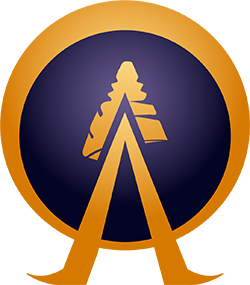ancient angkor
BLOGS | SIEM REAP | CAMBODIA
PLACE OF INTEREST
Cambodia is a Southeast Asian nation whose landscape spans low-lying plains, the Mekong Delta, mountains and Gulf of Thailand coastline.
ANCIENT ANGKOR GUIDE
What You Should Know About Cambodia
Welcome to the Kingdom of Wonder!
In the past Cambodia was a powerful country within South-East Asia, having a large land, but nowadays what remains of Cambodia’s land is relatively little. The land mass covers approximately 181,035 square kilometers and there are approximately 2600 kilometers of borders; one sixth of this distance makes up our coastal border, the rest are our land borders with other countries.
Cambodia is a bordered by Thailand to the north and to the west, bordered by Vietnam to the east and to the south, bordered by Laos to northeast, and bordered with the Gulf of Thailand to the south west.
In terms of distance, Cambodia can be measured 550 km from east to the west, and 450 km from the north to the south. This land is not a remote area.
Cambodia is located in a good geographical position because this country is protected from many natural disasters such as typhoons, hurricanes, earthquakes and severe flooding.
Rice, fresh-water fish and vegetables are the basic food of the Cambodia people. The most important crop of Cambodia is rice.
The population of Cambodia is about 18 million people and 60% of this total are young people who are aged less than 16 years old.
Buddhism is the national religion with 90% of Cambodians following buddhism, while the remaining population are mainly christians and muslims.
What to Bring
Wear light, airy, covering clothing to protect yourself from the sun and mosquitoes. The sun can be intense so bring a hat, sunglasses and perhaps sunscreen. Consider buying a traditional Khmer scarf (krama) to keep the sun off your neck. Carry a raincoat during the wet season, though you will probably only need it in the afternoon. You should have mosquito repellent for sunrise and sunset hours.
Wear practical shoes for climbing narrow steps and walking on uneven surfaces. For serious temple explorers, a flashlight, notebook and compass can come in handy.
Books, refreshments, trinkets, postcards and film are available from small vendors throughout the temple complex.
To get the most from your limited time you will need to plan a temple itinerary. Your personal temple itinerary depends largely on how much time you have and your level of interest, though some temples are ‘must sees.
About Angkor
Things to Know About Angkor Wat, Siem Reap and Surroundings
There are dozens of temple ruins in the Angkor Archaeological Park spread across more than 400 square km. all in different states of ruin and displaying a range of artistic and architectural styles.
To get the most from your limited time you will need to plan a temple itinerary. Your personal temple itinerary depends largely on how much time you have and your level of interest, though some temples are ‘must sees.
Siem Reap, the Gateway to Angkor
Siem Reap province is the most important province for developing tourism in Cambodia, because this province comprises many ancient temples built during the Angkor period. Siem Reap includes a lot of temples that attract tourists from all round the world. When they come to Cambodia they all come to visit this province.
At the Angkor region there are over 100 temples and monuments from the Angkor Era(Covering 3000 square kilometers) around Siem Reap, but most tourists just want to visit all the best 4-16 temples in the Angkor Group and outside area. It can take 1, 2, 3 days or a week or longer if they are have enough time. I’d be grateful for you allowing me to introduce to you the amazing architecture, culture and civilization that flourished in this country between 9th and 14th centuries AD.
Siem Reap Angkor International Airport
Siem Reap Angkor International Airport (SAI) is the second largest airport in Cambodia and is located in Siem Reap, the gateway to Angkor Wat. It is located about 45 km from Siem Reap and takes about an hour to get there from down town.
Chong Khneas River Port
For most of the year (July – March) daily ferries ply the Tonle Sap river and lake between Phnom Penh and Siem Reap. The end of the trip is marked by a hill, Phnom Krom, near the ferry dock at Chong Khneas 12 km (take 30 minutes from there) south of Siem Reap. During the dry season when the water is low, the ferry stops short of the dock and passengers transfer to smaller boats to go the final few hundred meters.
Buses to Siem Reap
Bus travel is now the most popular means of overland transport between Phnom Penh and Siem Reap. The road (National Route #6) is paved and smooth and there are several regularly scheduled daily buses in both directions, taking only 5 or 6 hours to make the trip.
Several bus companies, guesthouses and travel agencies offer a/c bus transport. Generally speaking, it is easiest to buy tickets through your guesthouse or travel agency. Prices and level of service varies from comfortable, basic a/c buses to deluxe a/c buses with entertainment, snacks and on-board toilet.
Most buses make 1-2 stops along the way, at Skun and/or Kampong Thom for a snack or lunch. Phnom Penh does not have a centralized bus station. Buses from different companies depart from different stations. See the individual bus company for the departure location. The Siem Reap bus station in town area.
